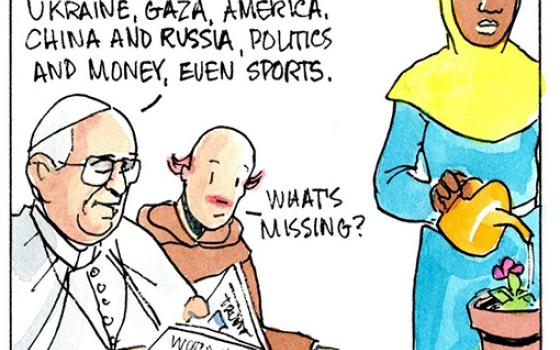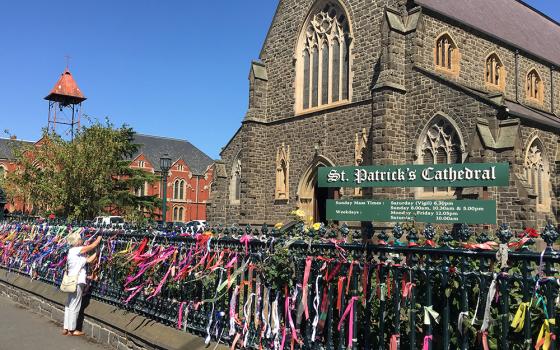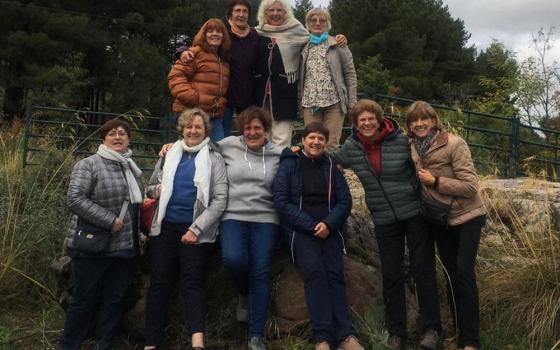THE VEIL: WOMEN WRITERS ON ITS HISTORY, LORE, AND POLITICS
Edited by Jennifer Heath
Published by the University of California Press, $21.95
Here is a book that combines two of my greatest interests, religion and fashion. I opened The Veil feeling like one of my toddlers when we took them to Disney World -- great adventure ahead.
This engaging collection of essays not only discusses the traditional veiling that we in the United States often associate with Islam, but also how religion, culture, power and clothing intersect through women’s dress. Whether it is the dress of Catholic women religious and the impact of Vatican II reforms upon them, the sari as a primary identifier for women’s identity in India, or Muslim women’s dress in different countries, The Veil reminds us that veiling narrowly understood, and the impact of religion on women’s dress broadly understood, is a cross-cultural and global phenomena.
The book is divided into three sections: The first examines veiling’s relationship to religion, the second focuses on the veil and sensuality, the third looks at the sociopolitical dimensions of veiling.
The authors who address Muslim veiling show the diversity in veiling practices across the globe. Authors remind us that Muslims did not invent veiling, and the practice of veiling women has been a part of Christianity since Pauline times. Paul associates the veil with male authority over women, not divine authority over women.
Too often in the United States we reduce veiling to oppression, calling for the liberation of Muslim women from the veil. Some of the authors in this book challenge us to see the veil as liberating, not a tool of male oppression. In fact, some of the most powerful passages are those that describe the forced unveiling of women.
The Veil, however, does not give us a monologue but instead a chorus of voices that focus on the diversity, ambiguity and power of women’s dress.
 For some women, such as those described in the chapter on Hasidic women’s dress, religious identity and clothing saturate women’s everyday lives. For other women, the role of religion within fashion is reserved to ritual life.
For some women, such as those described in the chapter on Hasidic women’s dress, religious identity and clothing saturate women’s everyday lives. For other women, the role of religion within fashion is reserved to ritual life.
I have worn two veils in my life. The first was at my first Communion, where I donned a child-sized wedding dress accompanied by an airy wash of nylon down my back. The second was at my wedding.
After reading this book, I am not surprised that these two veils are associated with religion and also are rites of passage in my life. But the book also talks about how veils not only mark our religious identity, but how women’s dress as a whole can serve to mark one’s culture, country, even town.
Reading the chapter on Amish women’s dress and how it varies from community to community in the United States, I could not help but think of traditional Mayan dress for women in Guatemala, where I lived for two years, and how each town has its own particular fabric and style. I can tell you the town where a Mayan woman is from in Guatemala just by looking at the fabric of her traditional dress (called traje in Spanish).
Veiling is not limited to women. In Islam men are encouraged to dress modestly. As a young lector in my Catholic church, I remember staring in awe as the priest would layer his vestments before my eyes, a reverse striptease that both intrigued and embarrassed me. Male masking is a type of veiling, as are the clothes worn by men in Zoroastrianism, Catholicism and Jainism. Hair is also a form of veiling and control over women’s hair within religion parallels control over her dress.
This book undermines the stereotype that women who veil are silent. The Veil gives voice to the women behind the veil. Authors do not shy away from the fact that veiling is a way for men to control women’s bodies. The book also points to the ways in which veiling is an empowering option for women.
We should not challenge the very existence of the veil, but instead focus on whether the women who wear it feel it is imposed on them or a choice. Ironically, through reading The Veil, you feel like you are peeking behind the veil, and the book allows us to see the world from behind the veil, giving us a fresh perspective on an ancient practice.
Michelle Gonzalez is assistant professor of religious studies at the University of Miami.



